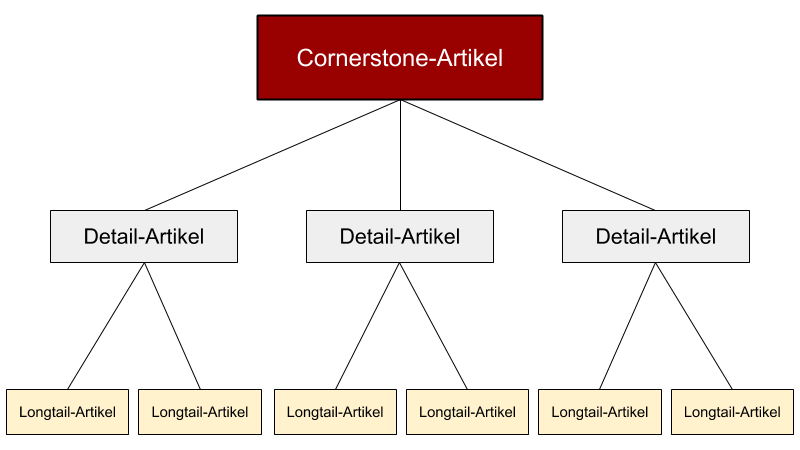How to Plan a New Niche Blog - With Examples
How do I plan a niche blog? This is exactly the question that customers ask me all the time. In this article, I address how newcomers might approach blog planning. As an example, I’d like to create a stock blog.
When planning a blog, the most important thing is the direction, or goal, of the new web presence. After that, you plan the categories and topics. Last but not least, you have to choose a suitable platform. I almost always recommend WordPress with a specialized hoster.
In view of the long-lasting interest rate misery, the interest in shares is also constantly increasing in this country. Reason enough, therefore, to think about possibly creating your own stock blog. So if you have a certain level of interest and expertise, you can inform other users and also build up an additional income. But how can a niche website be created? What needs to be considered and which steps are important?
1. Step: Determine the exact focus
Today, the path to success for one’s own website almost always leads through specialization. General theme websites and portals abound and are often provided by large and financially strong providers. Keeping up here on a broad front is almost impossible. This is exactly why it is important to find a special focus and thus serve a specific niche. Possible approaches would be:
- Strategy: make a specific stock strategy (e.g. value, buy & hold or dividend strategy) the main theme and go deep into the matter.
- Broker test: Put certain brokers under the microscope and put them through their paces. A good example is these broker experiences, as this allows beginners to get an idea of the providers.
- Stock Ratings: Conduct regular valuations of certain securities
These examples are only intended to show how diverse the world of stocks can also be. Once you have found a good niche, you should also check whether there is a market for it. The best way to do this is to use appropriate keyword tools. In most cases, topics that have at least a four-digit monthly search volume are suitable.
2. Step: Approach blog planning and create content
Another step involves planning the content of the blog. This primarily involves the following questions:
How should the blog be structured?

Is there really only one blog planned, with continuous posts in one category, or should the whole thing be subdivided into specific categories? In addition to blog articles, are there also fixed sub-pages that will be filled with evergreen content?
How quickly should the content be built up?
Should a large amount of content already be available at launch or is it about building up the blog publicly?
In any case, you will spend a lot of time writing blogposts. Or you might outsource the copywriting. But you should do that only when you know your readers better.
What should the blog be called?
A successful niche blog needs a name that catches the eye and stays in the memory. While many webmasters still use descriptive domains to enjoy possible ranking advantages with keywords, the branding idea is becoming more and more prevalent. Three steps are necessary here:
- Choose a catchy domain name
- Check if the domain name is not already taken
- Check that it does not violate any trademark rights (this is possible, for example, via an online search at the German Patent and Trademark Office = DPMA)
After this planning, the content creation can be started. This is also possible before the blog is put online. The more content is available, the sooner it can achieve visibility in search results.
3. Step: Create technical requirements
If you want to create niche sites, you should also deal with the technology. This mainly involves the following aspects:
Do you prefer a blog system or blog software with your own web space?
A blog system such as wordpress.com, blogger.com or Jimdo offer the possibility of opening your own blog free of charge and without your own web space. The advantages are obvious:
- The technical requirements are created by the provider
- Automatic updates ensure security
- Low to no costs (depending on the services selected)
Unfortunately, there are also disadvantages:
- No own domain (often a subdomain)
- Such a blog looks unprofessional
- Should the provider discontinue its service, the blog also disappears
- Disadvantages in terms of SEO
Blog software for your own web space is therefore always the better choice for a serious blog with monetization intent. Here, the design can be set individually and additional functions can be used without any problems. In addition, the operators retain full control over their content. The most popular blog software today is still WordPress, as it is very modular and can therefore be used in a variety of ways.
Find hoster for web space and domain

In order to run a blog, a WordPress hoster is needed, which provides webspace and domain. Here, interested parties should sift through various offers and in the end pick the hoster that offers the best price-performance ratio. The following aspects are particularly important:
- Fast webspace (short access times, most modern PHP version)
- Sufficient storage space (at least in the GB range)
- Good support
Customize WordPress
After the installation of WordPress it’s time to individualize it. Visually, this works via a suitable theme. Today, you can find online almost endless themes that differ visually, but also from the structure. Here it is important that the theme has all the necessary functionalities and visually fits the desired theme.
In terms of functions, plugins can also be used. The basic equipment often includes SEO plugins, with which metadata and similar settings can be easily implemented. In addition, it is also about the area of security. After all, the block should not be compromised hackers or spammers.
4. Step: Make blog more popular – marketing and SEO
The next step is to make your niche blog more popular. However, this is only worthwhile if really good content is created. In this case, there are several options available:
- Social media marketing (Facebook, Instagram and Co.)
- SEO
- Email marketing (newsletter build-up)
- Build contacts with influencers in the subject area
The field of marketing often requires a little creativity, because it is creative and special content that attracts attention. For example, a special survey or a summary of studies can ensure that even larger portals end up spreading this content and increase the awareness of your own niche blog.

With a certain degree of awareness, it is last but not least possible to monetize the blog. Here, affiliate programs of brokers or banks often come into question. In addition, you can also create and sell your own info products or simply display advertisements. The possibilities here are also very diverse. You just have to be careful that you don’t scare away your readers with the advertising. Then it also works with the money.
Note, however, the great success comes only with the years. You also need a certain time to find your target group, on which you can then align your texts. Then come the visitors and fans.
Getting started with a niche blog: still possible today
If you are interested in the stock sector and have a certain expertise, you can make this available to other users via a blog. But until the blog is usable, a certain planning as well as the implementation of some content-related as well as technical measures is required.
If you do everything right, from the choice of topics and content planning to technology and marketing, you can definitely celebrate success with an affiliate blog.
Have fun blogging!
